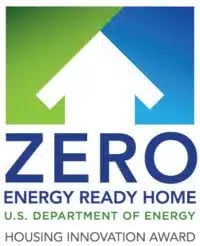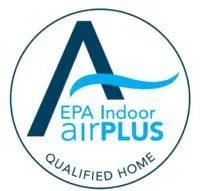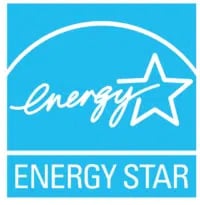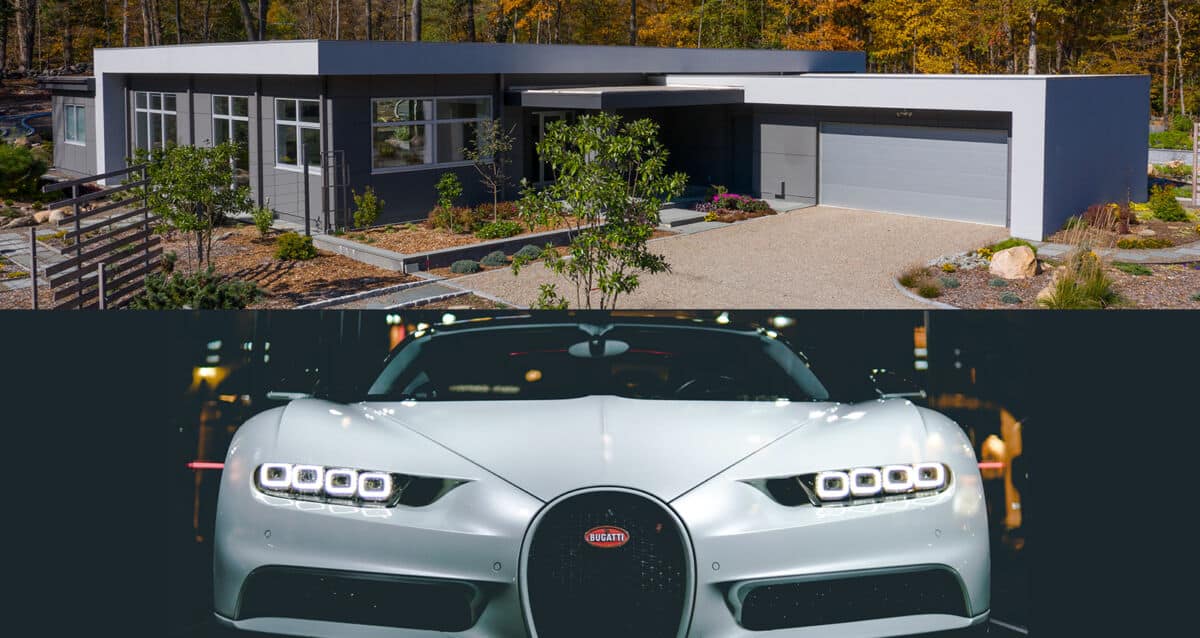
High-Performance Homes, like high-performance cars, do everything a home or car would do but better. However, unlike non-EV high-performance cars, which are typically not energy-efficient, high-performance homes are energy-efficient, use near net-zero or net-zero energy, use less water, and yet they are more comfortable and healthier to live in than conventional homes. They are also good for the environment and help mitigate the climate crisis, something high-performance cars don’t do (so far).
There is another key difference between high-performance cars and high-performance homes. The extra performance high-performance cars provide only appeals to some people. The benefits high-performance homes deliver have universal appeal.
Here are some of the ways these homes exceed the performance of conventional homes:
High-Performance Homes Use Near Net Zero or Net Zero Energy and Fight Climate Change
High-performance homes are designed and constructed, so the homes need less energy for heating and cooling and need less energy for making hot water. In many cases, they have photovoltaic solar panels that generate clean energy for 100% of the home’s energy. This means they have a zero or near-zero carbon footprint related to the energy the home uses.
These homes may use batteries to store the excess clean energy they make in the day for them to use at night. And, with or without battery storage, these homes generally use a net meter, aka a bidirectional meter, to connect to the power grid.
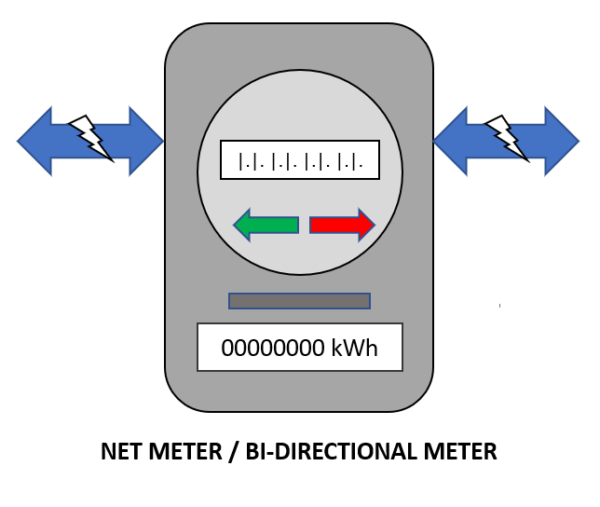
During the day, the home’s solar panels generate more clean energy than the home uses during the day. This excess clean energy is feed into the power grid, completely offsetting any fossil fuel-generated energy the home uses from the power grid when the sun isn’t out.
Plus, most high-performance homeowners save money on their utility bills because, in most areas, the power company credits the homeowner for the energy its solar panels produce and feed into the grid against the energy the home uses from the grid and would otherwise need to pay for. Therefore, homes with solar panels use bidirectional electric meters.
And High-Performance Homes are More Comfortable and Healthy Homes
Despite these homes using less energy and little to no fossil fuel energy, and despite these homes helping fight climate change, they are more comfortable and healthier than conventional homes.
What does Comfortable and Healthy mean relative to a home? It means the homes are virtually draft-free, the temperature in the home is consistent from room to room and within rooms. The humidity in the home is at the right level for comfort and health. These homes’ indoor air quality is excellent. Often better than outside air. This is because these homes have fresh air ventilation systems that are also heat or energy recovery ventilation (HRV or ERV) systems. The homes are built using low or no VOC emitting building materials and products, and the homes use high-performance air filters. Therefore, people with seasonal allergies, other respiratory conditions can breathe easier. Using low or no VOC building materials and products also eliminates or helps reduce problems for most people with chemical sensitivity issues.
High-Performance Home Homeowners Don’t Sacrifice Anything Because They Save Water
Despite the use of water-saving devices in high-performance homes, homeowners don’t have to sacrifice water pressure when taking showers, live with toilets that don’t flush properly, or pay unnecessarily high water and sewer bills.
While many areas of the country are not suffering from a shortage of water and especially clean water, many areas are. In fact, parts of the western US have been suffering from drought conditions for decades. And some experts predict more parts of the US may experience water shortages in the future.
At the time this post is being published the Associated Press is reporting that the US West is preparing for the possibly the first federal water shortage declaration.
Besides high- pressure/low flow showerheads and low/flow toilets, high-performance homes may also employee rainwater capture and greywater approaches to saving water.
Also, the less water a home uses, the less water waste treatment is needed lowering costs for communities and helping reduce taxes needed to fund water treatment plants.
What About These Homes’ Costs?
High-performance cars (even EVs) cost more to buy and cost more to maintain than conventional cars. However, high-performance homes actually cost less than conventional homes.
Yes, they may cost a bit more to buy or build, but the cost to buy or build a high-performance home is closer to the cost of a conventional home than a high-performance car is compared to the cost of a conventional car.
But, unlike high-performance cars, which cost more to maintain and operate, high-performance homes cost less to maintain and operate. In fact, the operational and maintenance cost savings high-performance homes deliver can easily offset the slightly higher cost of buying or building a high-performance home. How long it takes for this type of home’s total ownership cost to be lower than that of a conventional home varies depending on several factors, including the home’s initial cost, the existing tax credits, and other financial incentives to build green, and the cost of utilities in an area.
In BPC’s service area, the cost of energy is higher than average for the US, and the cost to build a high-performance home is not much more than a conventional one, so cost recovery and achieving savings from a high-performance home happens relatively quickly.
High-Performance Home Certifications
High-performance homes are generally ones that have been certified or at least are built to meet the certification standards for a green home.
BPC believes the current baseline standard for a high-performance home is the DOE’s Zero Energy Ready standard for certification. Other standards for high-performing homes include Passive House, LEED for Homes, the National Green Building Standard, and some others.
Third-Party Verification
Virtually all the high-performance green home certification standards require third-party verification to receive certification. While a home can be designed and built to meet the standard and be a high-performance home, as a homeowner, only having third-party verification and certification assures your home actually measures up.
High-Performance Home Metrics
High-performance homes have metrics you can use to measure how they perform. Here are just a few.
HERS Index
The HERS (Home Energy Rating System) index is a scoring system that measures how much net non-green energy the home uses. The lower the HERS score is, the better. A HERS score of 0 means the home uses net-zero energy. A new conventional home scores 100. An older home may score well over 100. A negative HERS score like -10 means the house is producing more net energy than it uses. A -10 HERS score means the home is producing 10% more net energy than it uses.
The home’s airtightness, insulation, and a selection of energy-efficient building systems, appliances, and other devices determine how energy-efficient the home is and is a factor of the HERS score a home gets.
The use of PV solar panels generates clean energy, which is also a factor in a home’s HERS score.
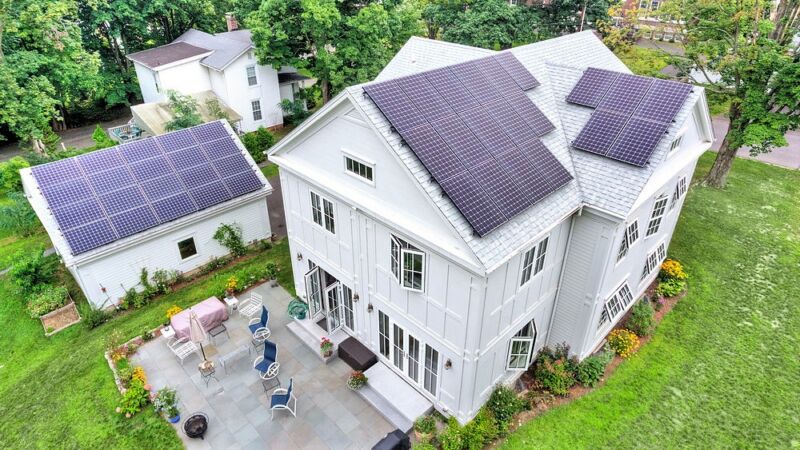
A Passive House is the certification standard used for the most energy-efficient homes. Without solar panels, a passive house will typically have a HERS score of between 37 and 40.
When a home uses PV solar panels, the clean energy they produce lowers the home’s HERS score further. A conventional home or even an older home with enough PV solar panels can achieve a 0 HERS score but would lack other metrics to be considered a high-performance home.
A high-performance home without solar panels will have a HERS score similar to that of a Passive House or a Zero Energy Ready Home. Several green home building standards such as LEED for Homes and the National Green Building Standards would also lead to a home that is considered high-performance.
An ideal high-performance home would be energy-efficient and use solar panels, and have a HERS rating of 0 or lower.
Insulation
Insulation is part of what makes a home energy efficient. How much insulation a home needs to be considered a high-performance home varies by climate zone and other factors.
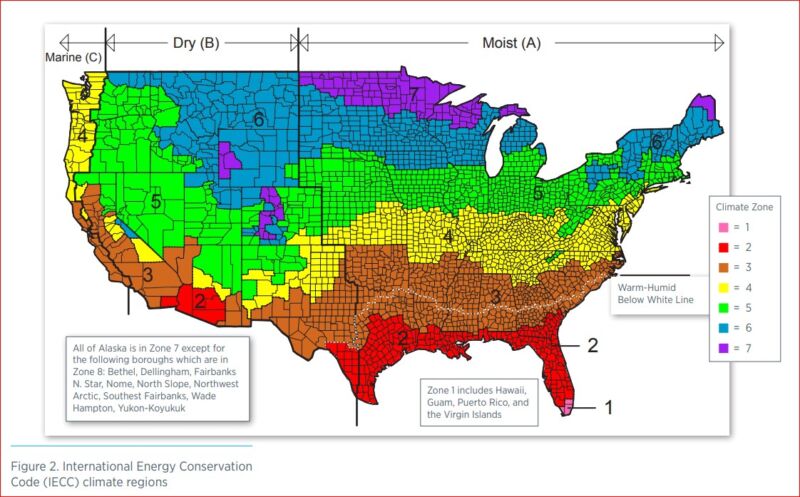
Windows use a different measurement system for insulation than is used for Slabs, walls, and attics.
For walls, floors, and attics, the insulation measurement system is the insulation’s R-value. A window’s insulation metric is called its U factor.
The higher the R-value, the greater the insulation is. High-performance homes have insulation R values higher to much higher than what the standard building code for a given climate zone would have.
For windows, the lower the U factor, the better the window acts to insulate the home.
Air Tightness and Energy Recovery
Airtightness measured in air changes per hour or ACH is a measure of airtightness of a home without mechanical ventilation in use. A typical conventional home may have an ACH of 5 to 8. Older homes usually have higher ACHs. A new home generally has an ACH of 5. A certified Zero Energy Ready Home (a high-performance home standard) has an ACH of around 2 or lower, and a certified Passive House would have an ACH of about 0.5.
High-performance homes use devices called Heat Recovery Ventilation (HRV) or Energy Recovery Ventilation (ERV) systems which recover the energy you use to heat or cool your home while providing proper fresh air ventilation. But, because 80-95% of the energy used to heat or cool the home is recovered, the home is considered high performance.
Indoor Air Quality (IAQ)
To be considered a high-performance home, the home must have excellent indoor air quality. A green building certification standard for IAQ from the US EPA is called Indoor airPLUS. It is often used when designing and building high-performance homes.
High-performance homes use a variety of complementary approaches to achieve high indoor air quality. Arguably these are the top three reasons, and high-performance homes use all these approaches
1) Building Materials and Products Used
It’s hard to have excellent indoor air quality when the materials used to build your home release unhealthy gases into the air. The primary class of gases of concern is called Volatile Organic Compounds or VOCs. Building products, paints, finishes, adhesives, and many more things used to construct a home can have and release VOCs into your home when it is built and over time.
To be high-performance, a home must be built using building products, paints, finishes, etc., that emit little to no VOCs.
2) How Stale Air Leaves and Fresh Air Gets Into Your Home
There are three ways fresh air comes into a home. Two are common to any home. Those are open windows and doors. The third way with conventional homes is the killer.
With conventional homes, fresh air comes in through open windows or doors. But these methods are not energy efficient. The third way is the fresh air pulled into the home through the home’s exterior walls, attic, and roof. There is insulation, dust, insects, sometimes droppings from mice or other pests in those walls and your attic or roof. So, the “fresh” air coming into your home this way is anything but fresh. It has all kinds of contaminants, none of which are good for you, and some of them can be harmful to those with certain medical conditions.
The air coming through your walls and roof is because conventional homes are not built to be airtight. A strong wind can push outside air through your home’s walls. And in the winter, warm air rising in your home goes out through chimneys, gaps in your upper floor ceilings and roof, and around windows. This causes negative air pressure in your home, which pulls outside air through your walls.
With high-performance homes, you can still open doors and windows if you want to heat or cool the air outside your home.
But high-performance homes are virtually airtight, so virtually no air can come in through walls, walls, attic, around windows, etc. These homes use fresh air ventilation systems which automatically expel stale air from inside your home at a controlled rate to assure no buildup of stale air and plenty of fresh air come in. But unlike in conventional homes, the air is not going through some of the dirtiest places in your home. The fresh air is brought into your home through dedicated air ducts that aren’t filled with insulation, dust, animal droppings, etc.
Plus, these homes use a special type of fresh air ventilation system. Ones that recover from the stall air being expelled, the energy used to heat or cool your home. They use that recovered energy to preheat or cool the fresh air coming in. These ventilation systems are called Energy Recovery Ventilation systems or ERVs and Heat Recovery Ventilation systems or HRVs.
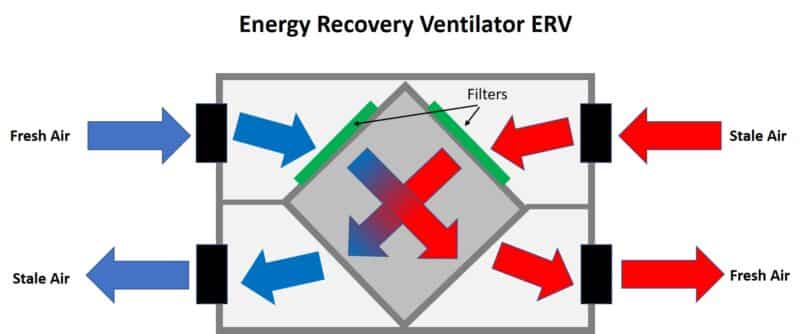
Both ERVs and HRVs reduce your home’s energy use while expelling stale air and bringing in genuinely fresh air. These systems typically have a filter that prefilters the fresh air coming from outside. But in high-performance homes, this is not the primary air filtration system.
3) How Air Inside Your Home is Filtered
To be classified as high-performance, a home must also have a high-performance air filtration system. One that is usually way more effective than ones typically used in conventional homes.
High-performance home air filtration systems use MERV 13 filters or higher. MERV stands for Minimum Efficiency Reporting Values. It is a system that designates the percent of particles between 0.3 and 10 microns in size the filter can effectively filter out of the airflow. The MERV filter rating scale goes from 1-20. The standard air filters used in many conventional homes range from MERV 2-5.
MERV 13 filters do an excellent job of filtering out particles above 1 micron and a relatively good job filtering out the smallest group of particles 1 to 0.3 microns. Higher number MERV filters like MERV 14-20 do even a better job of filtering out particles from 1 to 0.3 microns. There is growing evidence that particles, even small particles can cause serious health problems.
Here is particle information from the CDC website:
Breathing in particle pollution can be harmful to your health. Coarse (bigger) particles, called PM10, can irritate your eyes, nose, and throat. Dust from roads, farms, dry riverbeds, construction sites, and mines are types of PM10.
Fine (smaller) particles, called PM2.5 are more dangerous because they can get into the deep parts of your lungs — or even into your blood.
WARNING: High-performance homes are designed with HVAC systems designed for MERV 13 and sometimes higher MERV rated filters. Using a filter that has a higher MERV rating than the home’s HVAC system is designed to use can
- Reduce air circulation in your home
- Reducing air circulation can cause moisture problems as well as warm and cold areas in your home
- Increase your home’s energy consumption, and
- Damage your home’s HVAC system.

